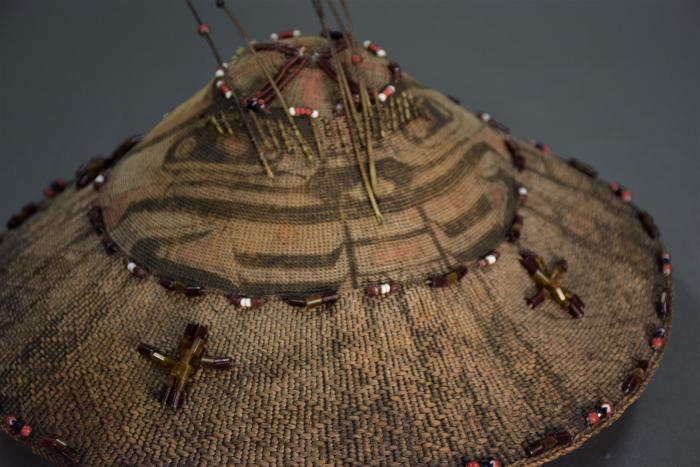Hat for men
Dawn Randazzo (Contributor)
John F.C. Johnson (Contributor)
Deborah McMullen (Contributor)
Vincent Evans (Contributor)
Pamela Smith (Contributor)
John F.C. Johnson (Contributor)
Deborah McMullen (Contributor)
Vincent Evans (Contributor)
Pamela Smith (Contributor)
Ethnological Museum of Berlin Repository
The Berlin Ethnological Museum
Grasses and Plant Fiber Heritage Kit
The Berlin Ethnological Museum
Grasses and Plant Fiber Heritage Kit
Dawn Randazzo: They even wove an inner ring to hold it secure on the head.
John Johnson: Russians used sea lion whiskers as pipe cleaners. Mentioned (as notetaker, I may have this wrong) that Chugach painted on top of the weave, which is different than the Tlingit style of using dyed material.
Deborah McMullen: Looks like they sewed on the brim. There are two differently weaved sides on the underside and on the top. They are perhaps attached together.
Vince Evans: Talked about possible connections to China and wondered about the style of the hat.
Pamela Jean Smith: The black paint could be octopus ink.
Unknown Curator: Mentioned by unknown source that the long pieces are sea Lion whiskers.
John Johnson: Russians used sea lion whiskers as pipe cleaners. Mentioned (as notetaker, I may have this wrong) that Chugach painted on top of the weave, which is different than the Tlingit style of using dyed material.
Deborah McMullen: Looks like they sewed on the brim. There are two differently weaved sides on the underside and on the top. They are perhaps attached together.
Vince Evans: Talked about possible connections to China and wondered about the style of the hat.
Pamela Jean Smith: The black paint could be octopus ink.
Unknown Curator: Mentioned by unknown source that the long pieces are sea Lion whiskers.
Measurements: 24 cm, 37 cm
Weight: < 2 kg
Weight: < 2 kg
Do you have a story to contribute or a comment about this item?
Login/register to comment 